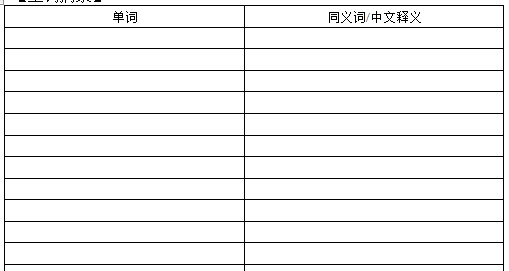托福阅读常考话题及练习题推荐一:工业革命(1)
1托福阅读常考话题-工业革命
Passage 1
Powering the Industrial Revolution
In Britain one of the most dramatic changes of the Industrial Revolution was the harnessing of power. Until the reign of George Ⅲ(1760-1820), available sources of power for work and travel had not increased since the Middle Ages. There were three sources of power: animal or human muscles; the wind, operating on sail or windmill; and running water. Only the last of these was suited at all to the continuous operating of machines, and although waterpower abounded in Lancashire and Scotland and ran grain mills as well as textile mills, it had one great disadvantage: streams flowed where nature intended them to, and water-driven factories had to be located on their banks whether or not the location was desirable for other reasons. Furthermore, even the most reliable waterpower varied with the seasons and disappeared in a drought. The new age of machinery, in short, could not have been born without a new source of both movable and constant power.
The source had long been known but not exploited. Early in the eighteenth century, a pump had come into use in which expanding steam raised a piston in a cylinder, and atmospheric pressure brought it down again when the steam condensed inside the cylinder to form a vacuum. This “atmospheric engine,” invented by Thomas Savery and vastly improved by his partner, Thomas Newcomen, embodied revolutionary principles, but it was so slow and wasteful of fuel that it could not be employed outside the coal mines for which it had been designed. In the 1760s, James Watt perfected a separate condenser for the steam, so that the cylinder did not have to be cooled at every stroke; then he devised a way to make the piston turn a wheel and thus convert reciprocating (back and forth) motion into rotary motion. He thereby transformed an inefficient pump of limited use into a steam engine of a thousand uses. The final step came when steam was introduced into the cylinder to drive the piston backward as well as forward, thereby increasing the speed of the engine and cutting its fuel consumption.
Watt's steam engine soon showed what it could do. It liberated industry from dependence on running water. The engine eliminated water in the mines by driving efficient pumps, which made possible deeper and deeper mining. The ready availability of coal inspired William Murdoch during the 1790s to develop the first new form of nighttime illumination to be discovered in a millennium and a half. Coal gas rivaled smoky oil lamps and flickering candles, and early in the new century, well-to-do Londoners grew accustomed to gaslit houses and even streets. Iron manufacturers, which had starved for fuel while depending on charcoal, also benefited from ever-increasing supplies of coal: blast furnaces with steam-powered bellows turned out more iron and steel for the new machinery. Steam became the motive force of the Industrial Revolution as coal and iron ore were the raw materials.
By 1800 more than a thousand steam engines were in use in the British Isles, and Britain retained a virtual monopoly on steam engine production until the 1830s. Steam power did not merely spin cotton and roll iron; early in the new century, it also multiplied ten times over the amount of paper that a single worker could produce in a day. At the same time, operators of the first printing presses run by steam rather than by hand found it possible to produce a thousand pages in an hour rather than thirty. Steam also promised to eliminate a transportation problem not fully solved by either canal boats or turnpikes. Boats could carry heavy weights, but canals could not cross hilly terrain; turnpikes could cross the hills, but the roadbeds could not stand up under great weights. These problems needed still another solution, and the ingredients for it lay close at hand. In some industrial regions, heavily laden wagons, with flanged wheels, were being hauled by horses along metal rails; and the stationary steam engine was puffing in the factory and mine. Another generation passed before inventors succeeded in combining these ingredients, by putting the engine on wheels and the wheels on the rails, so as to provide a machine to take the place of the horse. Thus the railroad age sprang from what had already happened in the eighteenth century.
2 托福阅读常考话题-工业革命练习题
【段落主旨】
Paragraph 1:
Paragraph 2:
Paragraph 3:
Paragraph 4:
【生词摘录】









